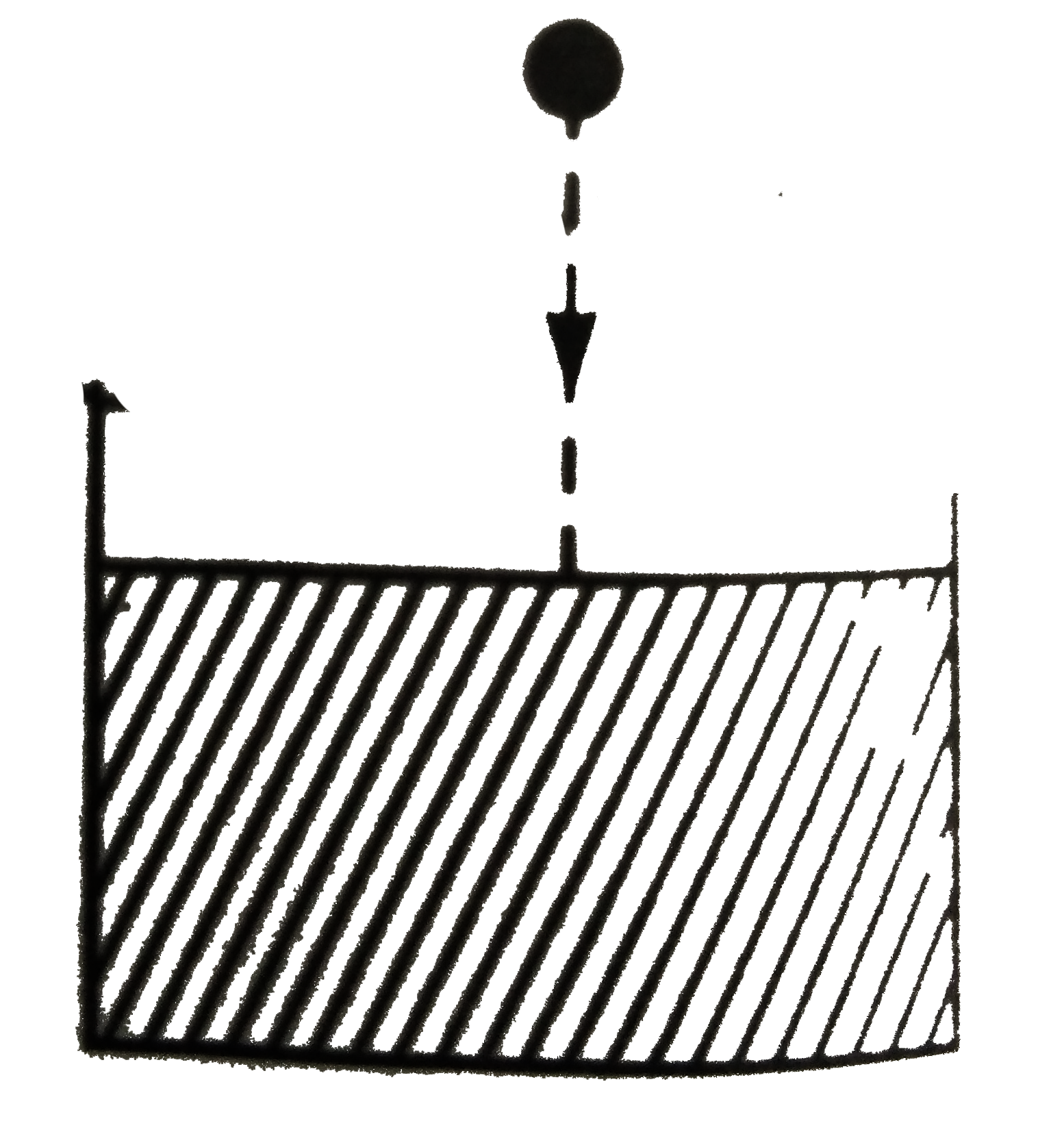A ball of density d is dropped onto a horizontal solid surface. It bounces elastically from the surface and returns to its original position in a time . Next, the ball is relasesed and it falls through the same height before striking the surface of a liquid of density .
(a) If , obtain an expression ( in terms of and for the time the ball takes to come back to the position from which it was released.
(b) Is the motion of the ball simple harmonic?
(c ) If how does the speed of the ball depend on its depth inside the liquid? Neglect all frictional and other dissipative force. Assume the depth of the liquid to be large.
The correct Answer is:(a)
(b) No
(c) constant
In elastic collision with the surface, direction of velocity is reversed bu its magnitude remians the same. Therefore, time of fall time of rise.
or time of fail .
Hence, velocity of the ball just before it collides with liquid is
Retardation inside the liquid
Time taken to come to rest under this retardation will be
Same will be the time to come back on the liquid surface.
Therefore,
(a) time the ball takes to come back to the position from where it was released
or
(b) The motion of the ball is periodic but not simple harmonic bacause the acceleration of the ball is in air and inside the liquid which is not propotional to the displacement, which is necessary and sufficient condition for .
(c) When , retardation or acceleration inside the liquid becomes zero (upthrust weight). There-fore, the ball will continue to move with constant velocity inside the liquid.
Topper's Solved these Questions
Similar Questions
A ball of density d is dropped on to a horizontal solid surface. It bounces elastically from the surface and returns to its original position in a time t1. Next, the ball is released and it falls through the same height before striking the surface of a liquid of density of dL
(a) If d<dL, obtain an expression (in terms of d, t1 and dL) for the time t2 the ball takes to come back to the position from which it was released.
(b) Is the motion of the ball simple harmonic?
(c) If d=dL, how does the speed of the ball depend on its depth inside the liquid? Neglect all frictional and other dissipative forces. Assume the depth of the liquid to be large.
View SolutionA ball of density ρ is dropped from a height on the surface of a non-viscous liquid of density 2ρ. Choose the correct options.

View SolutionA ball is dropped from height 'H' onto a horizontal surface. If the coefficient of restitution is 'e' then the total time after which it comes to rest is
View SolutionA ball is dropped from height 'H' onto a horizontal surface. If the coefficient of restitution is 'e' then the total time after which it comes to rest is
View SolutionA small ball is dropped from a certain height on the surface of a non-viscous liquid of density less than the density of ball. The motion of the ball is
View SolutionA ball is dropped on a horizontal surface from height h. If it rebounds upto height h2 after first collision then coefficient of restitution between ball and surface is
View SolutionA ball is given a speed v on a rough horizontal surface. The ball travels through a distance l on the surface and stops. A. What are the initial and final kinetic energies of the ball? b. What is the work done by the kinetic friction?
View SolutionA ball is dropped at t=0 from a height on a elastic surface. Identify the gragh which correctly represents relation of kinetic energy K with time t.
View SolutionA wooden ball of density D is immersed in water of density d to a depth h//2 below the surface of water and then relased. To what height will the ball jump out of water ?
View SolutionA ball of mass m is dropped onto a floor from a certain height. The collision is perfectly elastic and the ball rebounds to the same height and again falls. Find the average force exerted by the ball on the floor during a long time interval.
View Solution
